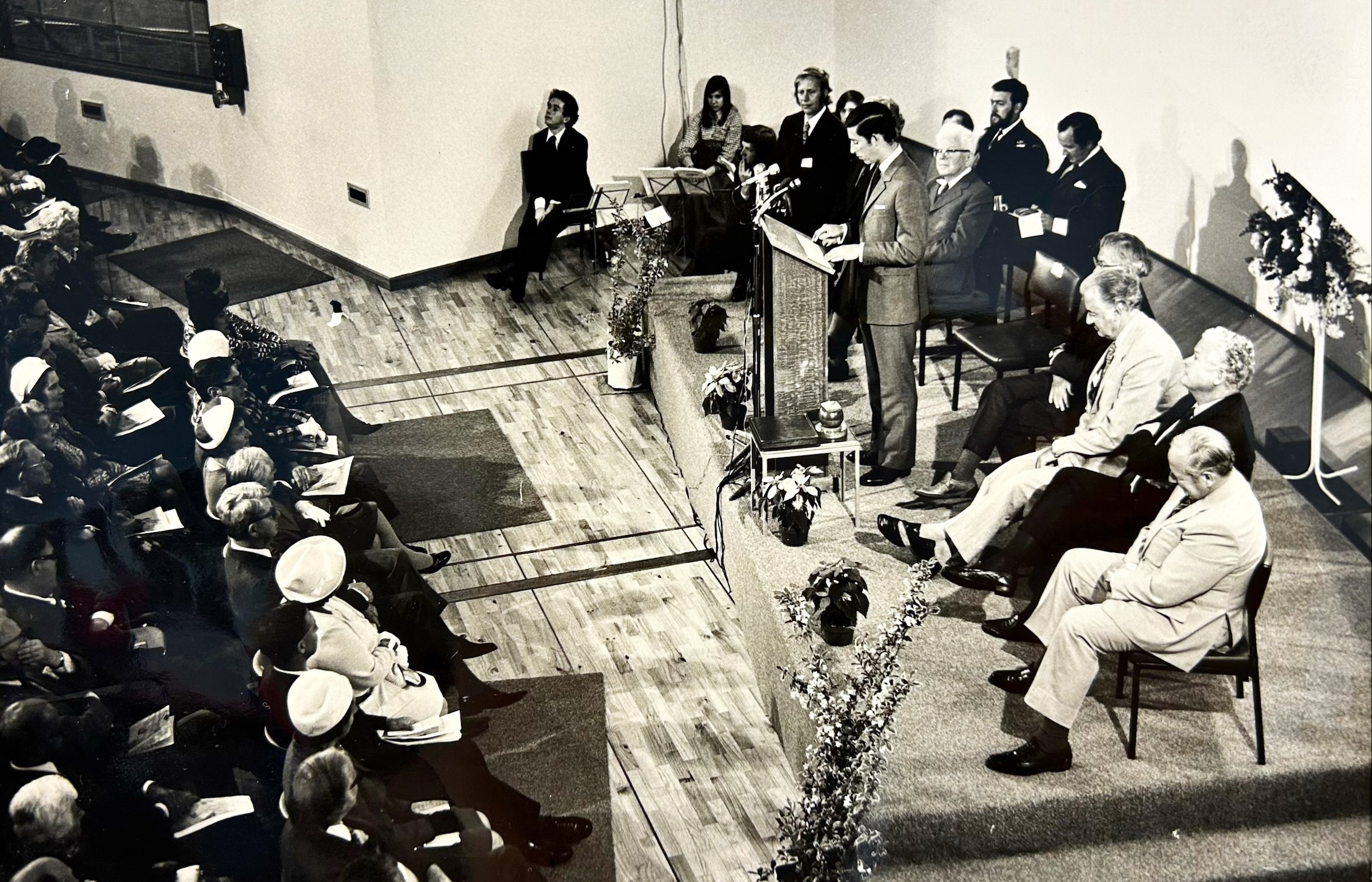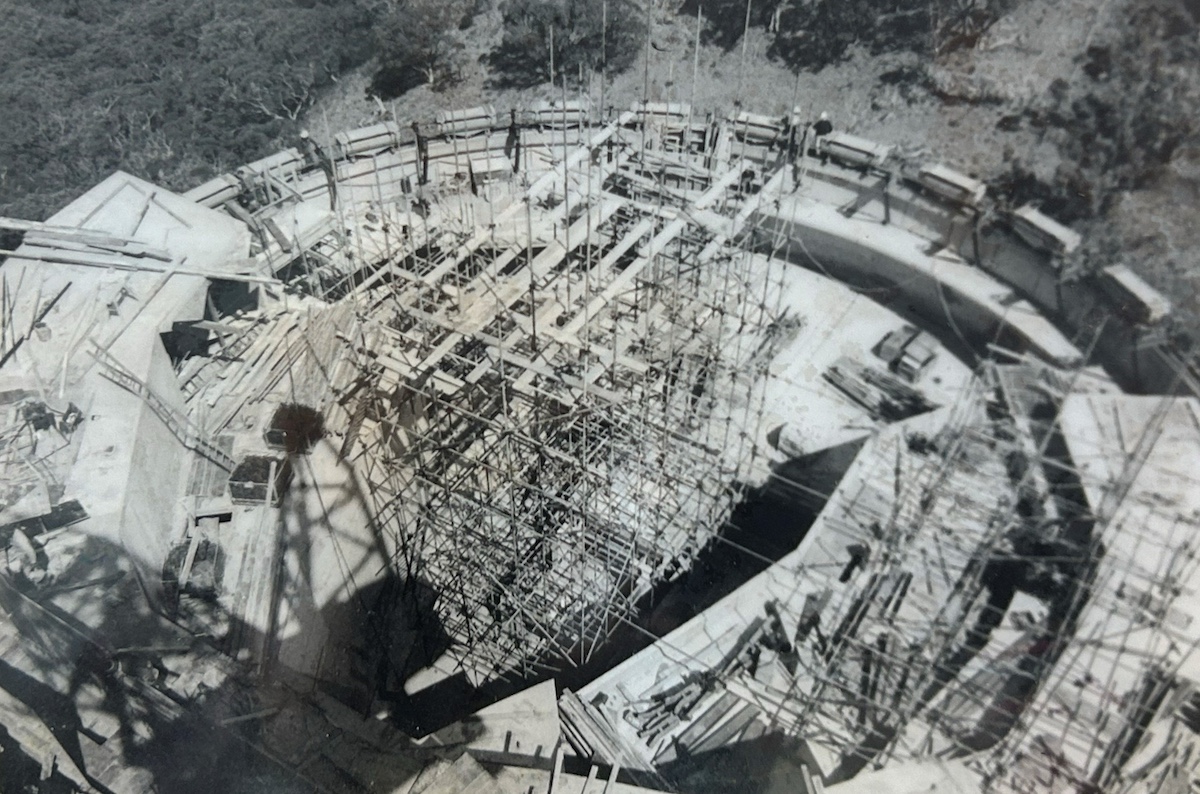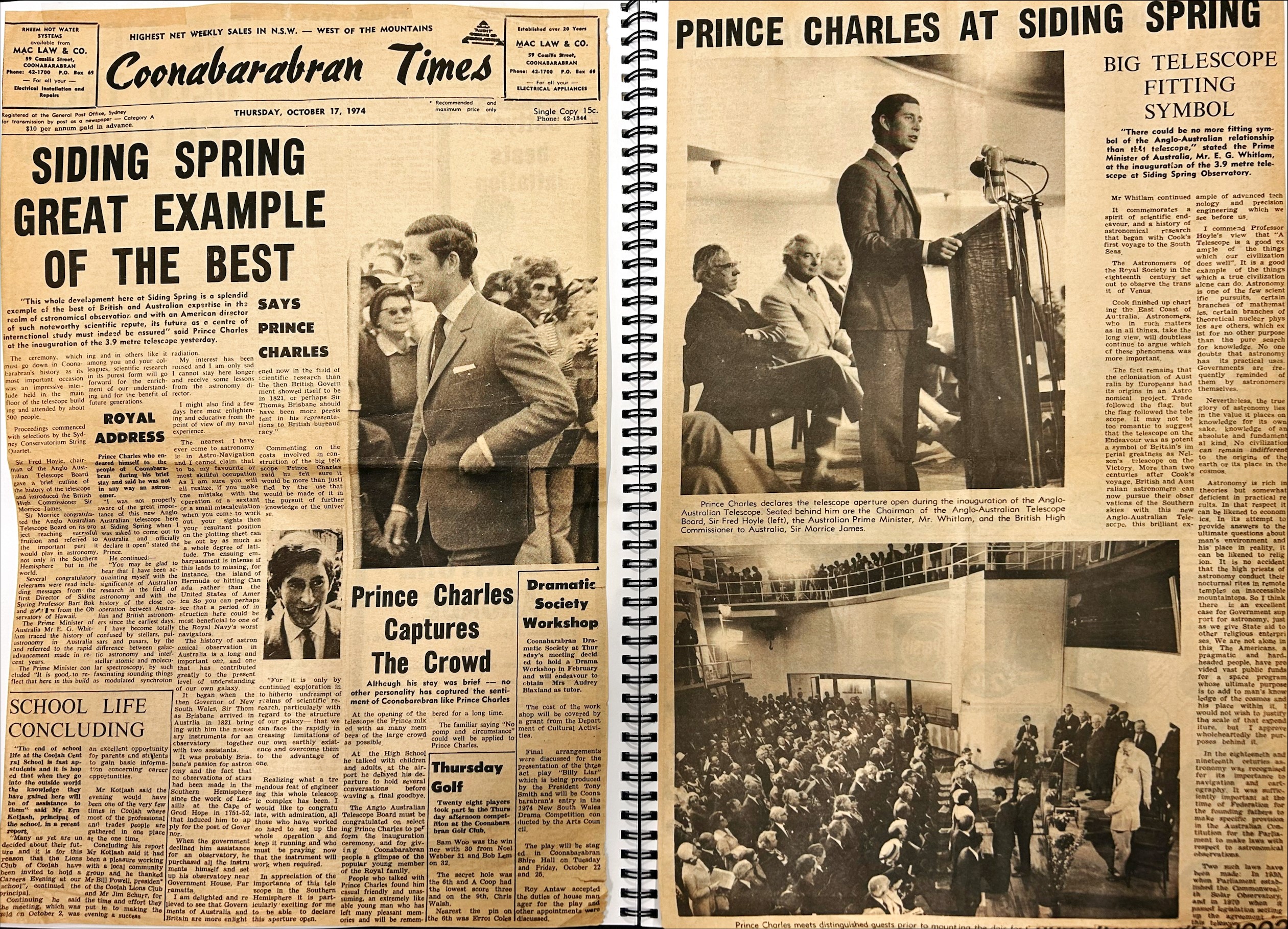Macquarie University's AAO celebrates a historic anniversary on 16 October 2024, half a century after the inauguration of the Anglo-Australian Telescope at Siding Spring Mountain, Coonabarabran. Since 2018, AAO (the astronomical instrument division of the AAT) has been part of our university.
16 Oct 2024
Fifty years ago today, a young Prince Charles - now King Charles III - stood at the top of Siding Spring Mountain to officially open the Anglo-Australian Telescope. It was a moment of national pride, with then-PM Gough Whitlam declaring the telescope's inauguration a symbol of scientific cooperation between Australia and Britain.
The Coonabarabran Times dedicated most of the newspaper to a multi-page splash celebrating the opening and quoting Prince Charles, who called the telescope a 'tremendous feat of engineering' and also said: 'For it is only by continued exploration into hitherto undreamt of realms of scientific research, particularly with regard to the structure of our galaxy, that we can face the rapidly increasing limitations of our own earthly existence and overcome them to the advantage of all.'

The AAT emerged following lobbying in the mid-1960s by Royal Society of London and the Australian Academy of Science. By April 1967, the UK and Australian governments had agreed to collaborate on a telescope based on the USA Kitt Peak Observatory’s 3.8-metre telescope. The new telescope would be built on Siding Spring Mountain, adjacent to the Australian National University’s existing observatory built in 1965.
Construction of the Anglo-Australian Telescope was an international effort. The mirror blank was made in Toledo, Ohio, then shipped to Newcastle, England, where the surface was ground and polished. The telescope mounting and drive systems were manufactured in Japan, while Australian companies Leighton Constructions Limited and Evans-Deakin Industries Limited built the telescope building and dome.
Australia and Britain split the bill on the final construction cost of A$15,932,250, and under the 1971 Anglo-Australian Telescope Agreement, observing time was divided equally between astronomers from both countries.
When commissioned in 1974, the AAT was the largest telescope in the Southern Hemisphere and played a crucial role in balancing the astronomical observations between the Northern and Southern Hemispheres.
 One of the AAT's most significant innovations came with the development of the Two Degree Field facility (2dF) in the 1990s, a robot-controlled system that can study 400 stars at once over a two-degree patch of sky – that is, about four times wider than the full moon. This capability put Australian astronomy firmly on the global map, enabling large-scale survey projects providing the world with some of its richest astronomy data.
One of the AAT's most significant innovations came with the development of the Two Degree Field facility (2dF) in the 1990s, a robot-controlled system that can study 400 stars at once over a two-degree patch of sky – that is, about four times wider than the full moon. This capability put Australian astronomy firmly on the global map, enabling large-scale survey projects providing the world with some of its richest astronomy data.
In 2015, the HERMES instrument was commissioned. This high-resolution spectrograph combined with the 2dF robotic positioner, is used in the 'Galactic Archaeology with Hermes' (GALAH) Survey, an ambitious project aiming to piece together the Milky Way's history by studying the chemical makeup of one million stars.
Half a century on, the AAT remains a powerhouse in the astronomical world. In 2009, it was ranked as having the fifth-highest impact of the world's optical telescopes. Between 2001 and 2003, the AAT was rated the most scientifically productive four-metre-class optical telescope in the world based on scientific publications using data from the telescope.
The joint venture with Britain ended in 2010, and the telescope was handed to Australia. Macquarie University took on the responsibility of the instrument operation division, Australian Astronomical Optics (AAO), in 2018.
Fifty years after the commissioning of AAT, the innovators at AAO keep developing cutting-edge instruments for astronomical observation all over the world.
From building high-stability spectrographs like the University College London Échelle Spectrograph (UCLES), used to discover many exoplanets, to precision imagers like IRIS2, a wide-field infrared camera and spectrograph, AAO’s engineers and scientists work at the forefront of astronomical optics - from photonics and positioning systems to astronomy data management and research.
And as the world enters a new era in space exploration, AAO continues to play a key role in keeping Australia at the forefront of space technology and astronomy research, and to inspire a new generation of scientists.
Φ